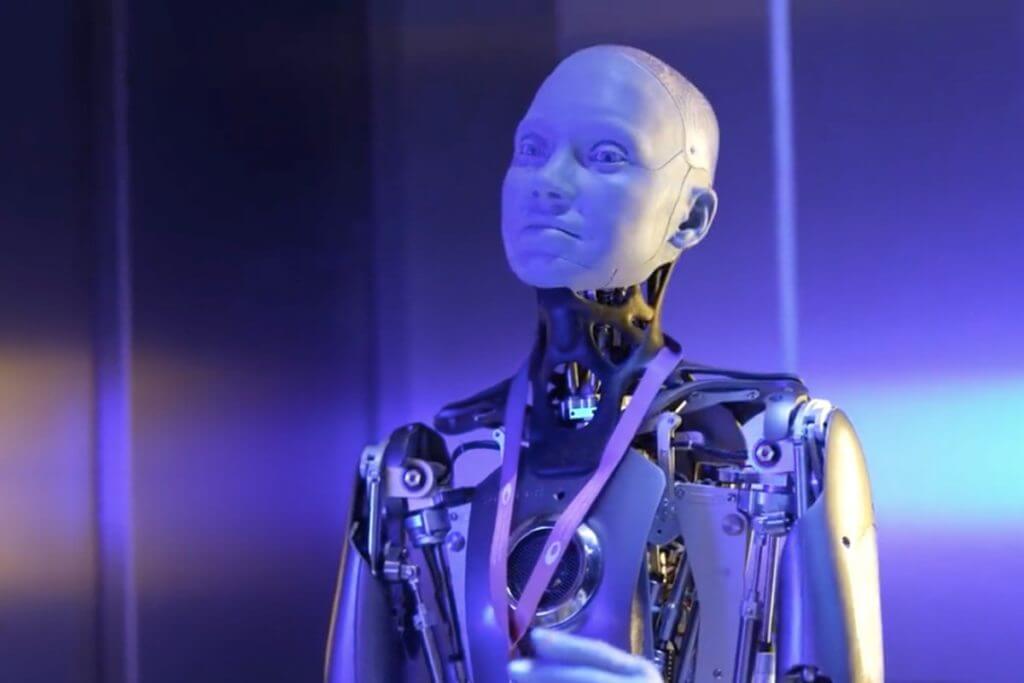Astonishing technological advancements have been making waves in the vast, dynamic ocean of robotics, ushering in a remarkable era of humanoid robots. They are a vision in motion, bearing uncanny resemblances to human form and movements. Poised to induce seismic shifts across multiple sectors – from healthcare to manufacturing, these groundbreaking marvels are nothing short of a revolution. Let’s delve deeper into the story of a particularly notable exemplar: Ameca.
Born out of tireless toil of the research maestros stationed at Tokyo’s renowned University, Ameca is a mechanical symphony of innovation and precision. Its size is that of a petite adult human, standing erect at 1.3 meters, weighing around 30 kilograms. With multifaceted talents that transcend the capabilities of ordinary machines, Ameca is designed to walk, run, and even leap with gusto. It sports an impressive repertoire of skills – moving objects with finesse, interacting with humans with an uncanny relatability, and much more.
One cannot overlook the astonishing features that make Ameca a technological tour-de-force. It walks and runs with a grace and stability that could put an Olympic gymnast to shame. It balances itself like a seasoned acrobat, deftly navigating uneven surfaces – a feature making it a boon in hazardous landscapes such as disaster-struck zones or perilous industrial environments.
Moreover, Ameca possesses a remarkable sensory perception, outfitted with a suite of sensors that include cameras, microphones, and tactile detectors. It perceives, interacts, and responds with an astute sense of awareness, while its AI brain, advanced and learning-capable, adapts swiftly to new scenarios.
The implications of Ameca’s existence extend far and wide across industry borders. In the realm of healthcare, envision it aiding the tireless medics, carrying medical gear, or even assisting in delicate surgeries. Industrial manufacturing could exploit its skills to carry out tasks that are hazardous or too demanding for human workers.
Beyond the realms of the practical, Ameca could also venture into the world of make-believe. Owing to its human-like design and nimble movement capabilities, it is poised to make its mark in movies or video games. Imagine it serving as interactive guides or next-gen virtual assistants.
The path towards the mainstream acceptance of Ameca, nonetheless, is laden with challenges. The exorbitant costs associated with its production currently put it out of reach for many potential applications. Numerous technical barriers, including the need to improve speed and agility, must also be hurdled.
Yet, the future for Ameca and its metallic siblings is gleaming with promise. As technology relentlessly propels forward, these extraordinary entities will likely become more economical and capable. It is a future where Ameca and its ilk could be commonplace across various sectors, accomplishing tasks that once seemed the stuff of science fiction.
In sum, Ameca stands as a potent testament to the phenomenal potential harboured by humanoid robots. Blessed with advanced sensory and movement capabilities, it’s on the precipice of transforming industries from healthcare to manufacturing. The road ahead is fraught with obstacles, yet the prospect of humanoid robots like Ameca thriving is truly thrilling. Our anticipation mounts as we await the tide of advancements that will continue to reshape our world.
Frequently Asked Questions
How does a humanoid robot differ from other types of robots?
A humanoid robot mirrors the human form and movement, whereas other robots may sport varying designs and mobility.
What applications could humanoid robots have?
Humanoid robots could find their place in a variety of sectors, including healthcare, manufacturing, and entertainment.
What challenges do humanoid robots face?
From financial barriers to technical snags, societal acceptance to ethical concerns, humanoid robots have a plethora of challenges to surmount.
How does the future of humanoid robots look?
Given the relentless march of technology, humanoid robots are anticipated to become more affordable and multifunctional, leading to a surge in their use across industries.
Will humanoid robots substitute human workers entirely?
While humanoid robots may take over tasks deemed unsafe, strenuous, or unfit for humans, it is improbable for them to completely usurp human roles. They are more likely to work in conjunction with humans. Further, the advent of humanoid robots also spells the creation of new job opportunities in sectors like robotics engineering and maintenance.


